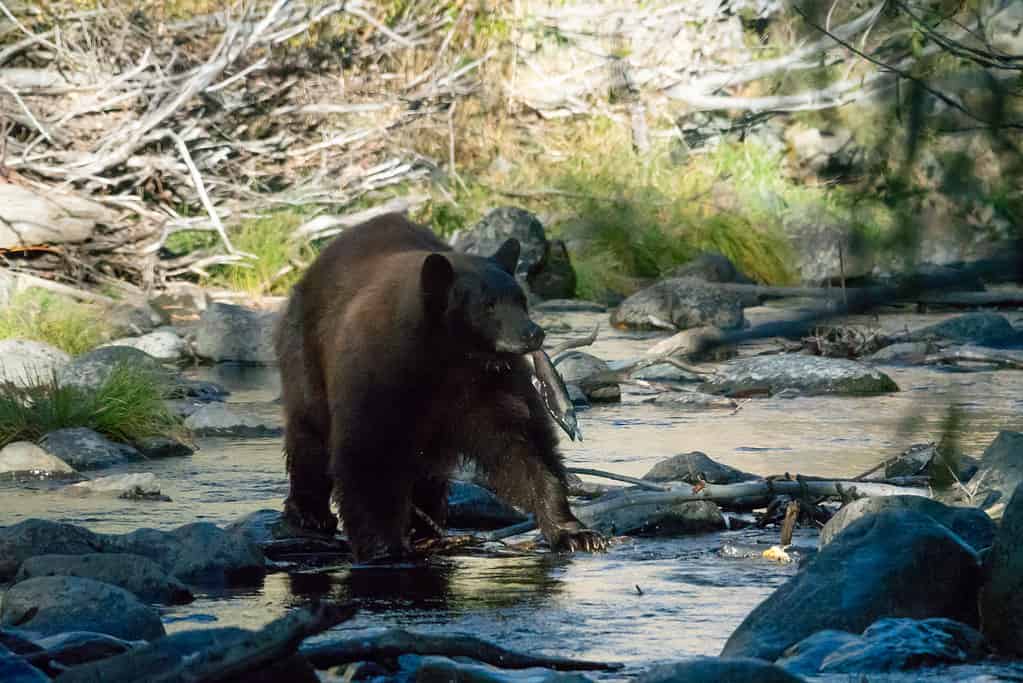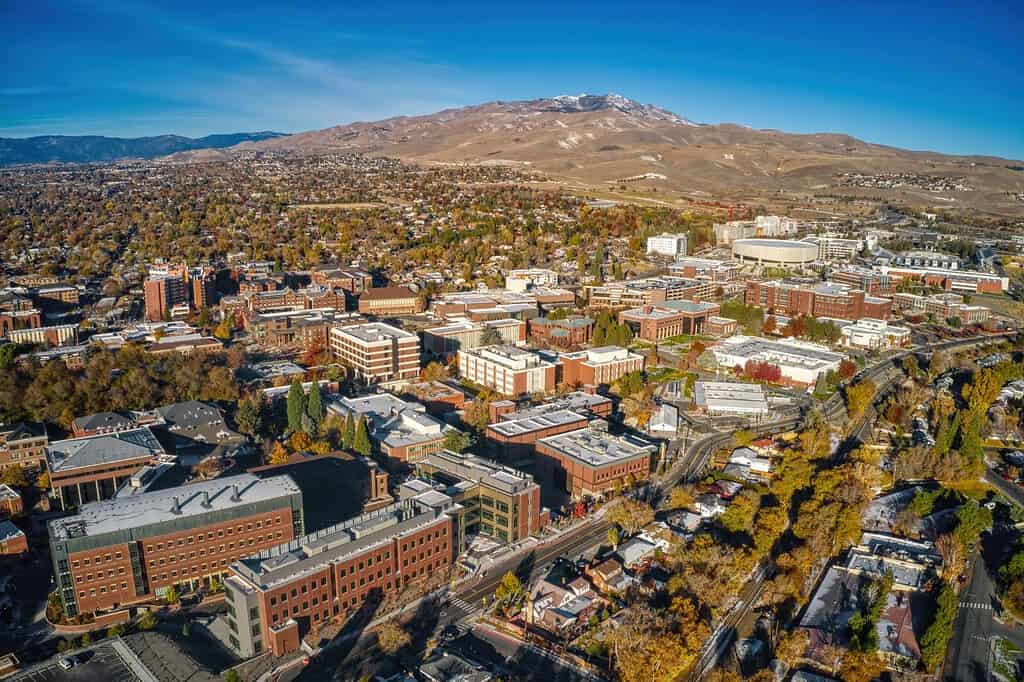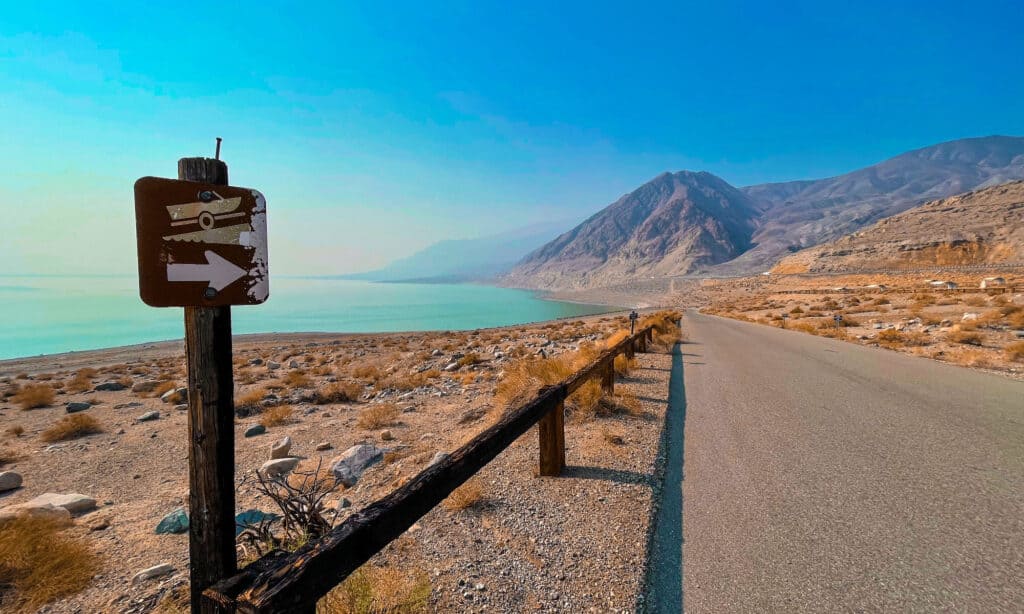Nevada, the so-called “Silver State,” is a state in the Western United States. Along with other nearby states such as Colorado, Utah, and Wyoming, Nevada is one of the western Mountain states, a region defined by varying terrain, diverse climates, and an abundance of wildlife. This region is also known for having some of the largest bear populations in the country – outside of Alaska! This article names several locations in Nevada where you can expect to have relatively large bear populations compared to other parts of the state. That way, you know how to prepare for a bear sighting, where to practice bear safety, and when to look out for these uniquely majestic creatures. Let’s cover some of the locations where you could see bears in Nevada now!
Bears in Nevada

Most black bears have a thick, black coat, but it can also look dark brown, grayish-blue, blond, or cinnamon.
©Mark Caunt/Shutterstock.com
The only species of bear to live in Nevada is the black bear. However, despite their name, this bear species can come in a range of colors. Black bears do not always remain in the same place. In fact, they are known to roam in order to meet their own food needs and to provide for their cubs. This can lead the bears to traveling wide distances or even entering new territory in search of food. However, bears in Nevada primarily live in “bear country.” This area is the western part of the state near California, where bears may cross state lines in the Sierra Nevada mountain range. The three areas described below are all within or near the edge of “bear country.”
During the winter, you are less likely to encounter a black bear compared to early spring when they emerge from hibernation or autumn when they prepare for the winter season. During the colder months, black bears make dens. You could find them living in hollow trees, under logs, under rocks, in caves, or even in trees. However, if you do not go poking around, you are unlikely to have an active bear encounter during the winter.
1. Lake Tahoe Basin

Bears live all around Lake Tahoe and the Tahoe Basin, but South Lake Tahoe alone is home to at least 35-40% of them. That is a total of 400 to 500 black bears!
©Lisa Parsons/Shutterstock.com
Hundreds of black bears live in the mountainous parts of Nevada, including in the areas around Lake Tahoe. Lake Tahoe sits at the border of California and Nevada. The surrounding area and Tahoe National Forest are home to many black bears, who primarily live in the forested areas. The bears in this area are often called “opportunistic omnivores” since they will eat whatever food they can get. One of the most well-known black bears in the Tahoe Basin is one of the most famous bears in Nevada. This infamous character was the 500-pound giant “Hank the Tank.” Hank the Tank became a staple in local news for breaking into over 20 homes during a 12-month period. After being on the run throughout 2022 and 2023 and breaking into dozens of homes, eventually, Hank was captured and brought to a wildlife sanctuary in Colorado in 2023.
Contrary to popular belief, Las Vegas is not the capital of Nevada. Rather, Carson City is the hub for government. Carson City is only about 30 minutes from Lake Tahoe, and black bears have been known to travel into the urban area to cause trouble. In August 2023, a roaming black bear in Carson City was even blamed for the mysterious death of a goat! Hundreds of bears live around the Lake Tahoe area. Knowing that bears will often travel to find food, anywhere in the extended Tahoe Basin is within their reach. Because of that, Carson City is another place where you are highly likely to spot a bear in Nevada.
2. Truckee Meadows Valley

Reno is a Nevada city just east of the Sierra Nevadas, where many black bears make their home.
©Jacob Boomsma/Shutterstock.com
Since black bears in Nevada live in the mountain-filled areas in the western part of the state, you should plan to encounter bears in the foothills of the Sierra Nevada. Reno, which is just east of the Sierra Nevadas, is known to have bear sightings as the animals emerge from their winter dormancy in the spring. Recently, Reno firefighters even rescued a bear that got stuck in a neighborhood tree! The Truckee Meadows valley, which covers much of the broader Reno-Sparks Metro Area, was historically home to many black bears. In the 1900s, many of the black bears native to the area were driven away. However, recent reports suggest that black bears are rebounding and starting to make more frequent appearances in the Truckee Meadows.
3. Northwestern Mineral County

Walker Lake is a body of water in Mineral County, Nevada, where black bear sightings have increased in recent years.
©iStock.com/Christopher Thienel
About 75 miles southeast of Reno sits Walker Lake, a natural lake in Nevada’s Great Basin. Walker Lake is in Mineral County and part of the the eastern Wassuk Mountain Range. Recently, in the last few years, Mineral County residentss have reported an increasing number of black bear sightings. This is particularly relevant during the autumn months, when the bears start to become more active in August as they begin consuming more calories to prepare for the winter. The increased bear activity also brings risks for both the bears themselves and drivers. Unfortunately, there are typically several car accidents involving bears in Mineral County every year. Since bears roam naturally and there is at least several hundred bears in Nevada, they frequently make their way through the forested and remote parts of Nevada.
The photo featured at the top of this post is © Menno Schaefer/Shutterstock.com
Thank you for reading! Have some feedback for us? Contact the AZ Animals editorial team.






